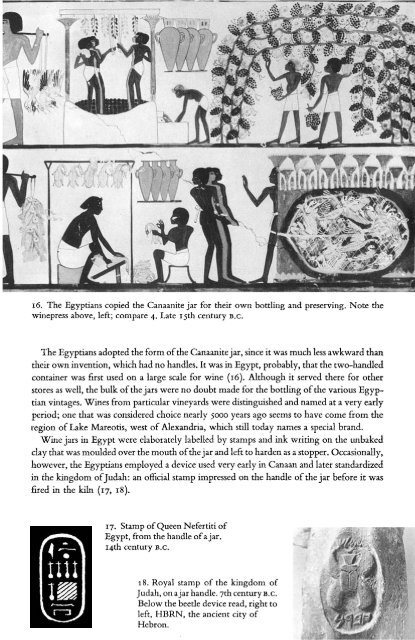Create successful ePaper yourself
Turn your PDF publications into a flip-book with our unique Google optimized e-Paper software.
16. The Egyptians copied the Canaanite jar for their own bottling and preserving. Note thewinepress above, left; compare 4. Late 15th century B.C.The Egyptians adopted the form of the Canaanite jar, since it was much less awkward thantheir own invention, which had no handles. It was in Egypt, probably, that the two-handledcontainer was first used on a large scale for wine (16). Although it served there for otherstores as well, the bulk of the jars were no doubt made for the bottling of the various Egyptian vintages. Wines from particular vineyards were distinguished and named at a very earlyperiod; one that was considered choice nearly 5000 years ago seems to have come from theregion of Lake Mareotis, west of Alexandria, which still today names a special brand.Wine jars in Egypt were elaborately labelled by stamps and ink writing on the unbakedclay that was moulded over the mouth of the jar and left to harden as a stopper. Occasionally,however, the Egyptians employed a device used very early in Canaan and later standardizedin the kmgdom of Judah: an official stamp impressed on the handle of the jar before it wasfired in the kiln (17, 18).17. Stamp of Queen Nefertiti ofEgypt, from the handle of a jar.14th century B.C.18. Royal stamp of the kingdom ofJudah, on ajar handle. 7th century B.C.Below the beetle device read, right toleft, HBRN, the ancient city ofHebron.











